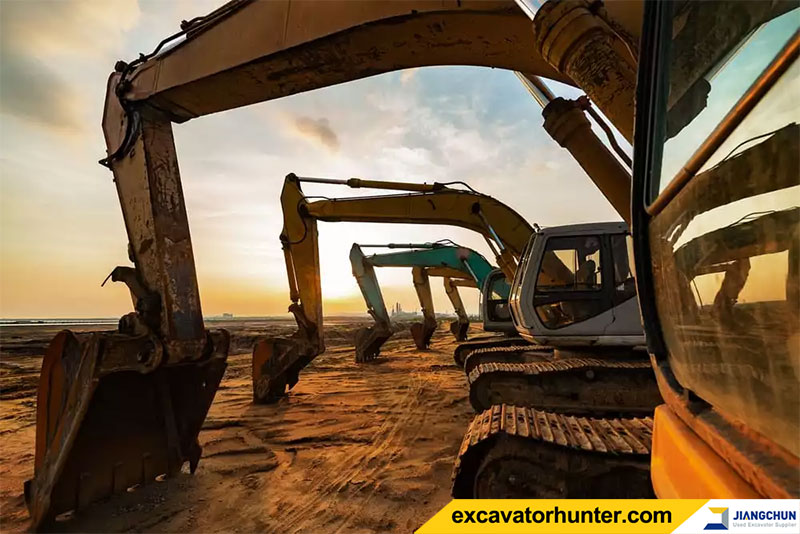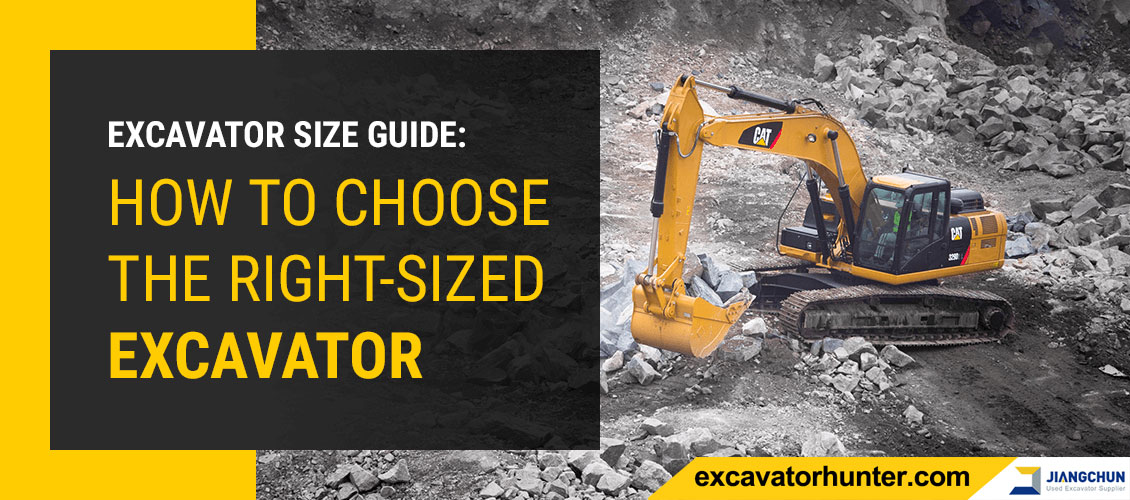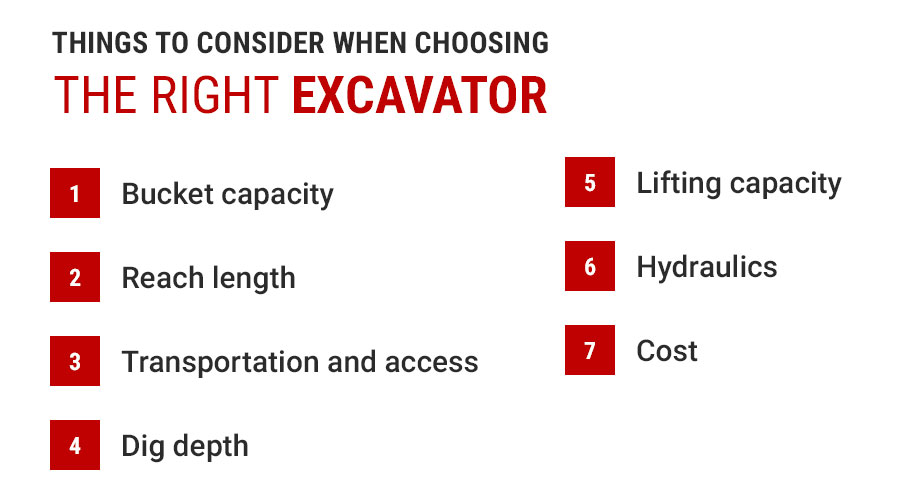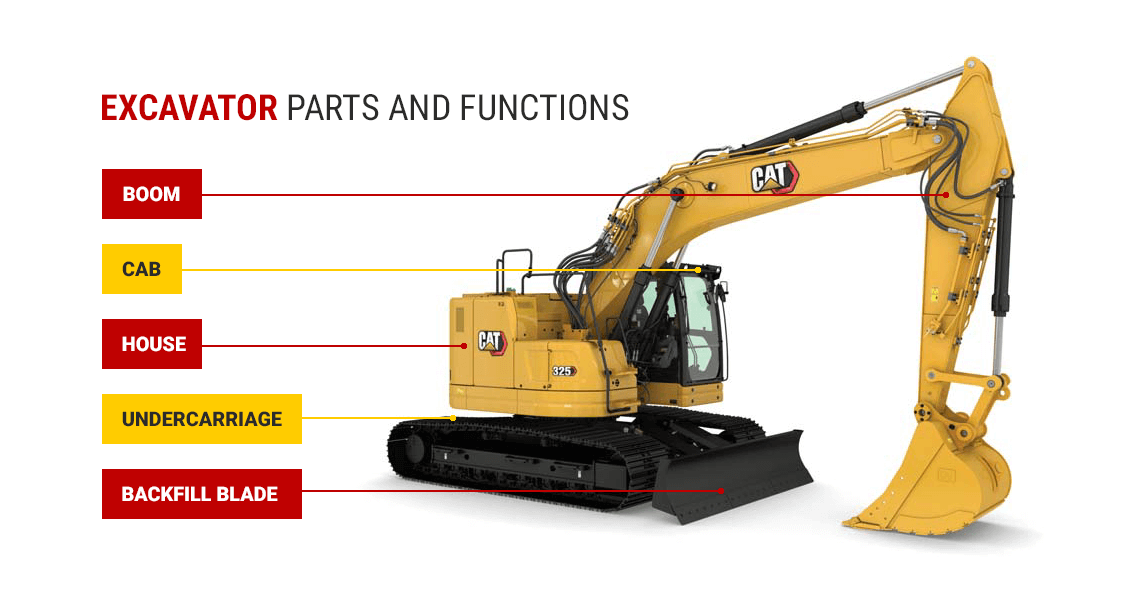Excavator Sizes: Choosing the Right One for Your Project
Choosing the right equipment for a digging project can be a time-consuming task, especially since it’s so important to make the right choice. Even once you’ve decided on using an excavator, you still need to make sure you choose the right size. Pick one that’s too small or doesn’t have the right functionality and you won’t be able to get the job done properly. Choose one that’s too large and not only may it be the wrong fit for the job, but it could also push you over budget. So how do you decide what excavator size is right for you?
There are many different types of excavator, but they all fall into four main size categories: mini, midi, standard, and large. In order to pick the right excavator size, you need to know what your options are.

EXCAVATOR SIZE GUIDE: HOW TO CHOOSE THE RIGHT-SIZED EXCAVATOR
Choosing the right-size excavator is crucial to the success of a project. These pieces of heavy machinery play a major role in completing jobs involving digging, but can also be used for several other tasks. Don’t invest in an excavator until you know how to choose the right excavator size and what each attachment and feature can offer.
Before you pick an excavator, take time to do your research and be fully informed about the different sizes of excavators as well as other critical factors that go into picking the best excavator for your needs.

EXCAVATOR SIZE GUIDE
Any excavator size comparison needs to cover the three main sizes of the machinery: small, medium and large. Choosing the right-sized excavator starts with being aware of the differences between the primary types. Learn more about the primary sizes of excavators below:
SMALL EXCAVATORS
Small excavators, often referred to as compacts or minis, are excavators designed to be used in hard-to-reach areas and for jobs that don’t require too much power.
Due to their small size, they are one of the most versatile types of excavators. Companies use these models for subdivision sewer repairs, foundational repair, in-building work and water line installs.
Unlike other heavier excavators, they have the advantage of sometimes being able to be pulled behind Class 1 or Class 2 trucks without needing the driver to have a Commercial Drivers License, but you should still double-check with your local requirements at your DMV. They’re perfect for projects in which you don’t need a standard-sized excavator, but want machinery that’ll help you complete a job faster than if you did it by hand.
MEDIUM EXCAVATORS
Mid-sized or midi excavators make up a large percentage of the excavators used in a variety of industries. Typically, they’re used in utilities, landscaping, road and bridge construction and building construction. There are a few different types of excavators available in this size that come in a standard tail design or in a minimum or zero radius construction.
These excavators provide many of the mobility advantages of the compact excavators while also providing power similar to that of the larger models.
LARGE EXCAVATORS
Large excavators are considered standard in the industry. As such, they’re referred to as full-size or standard exclusive models.
In the lower weight excavators, you can find zero or close to zero swing radius machines. Most excavators, however, are full-featured and full-sized. These are the least mobile excavators, and the heavier they get, the harder it will be to navigate tough terrain with them. However, they make up for this lack of mobility with their top-tier power.
7 THINGS TO CONSIDER WHEN CHOOSING THE RIGHT EXCAVATOR
Before you buy or rent an excavator, you should be knowledgeable about the different options available to you in addition to the three main sizes. There are tons of other attachments and features that excavators offer. As such, it’s crucial you know more about some of the key specs and additions that can help you make a wise choice:

- Bucket capacity: When you pick out your excavator, one key stat that you need to pay attention to is bucket capacity. Bucket size relates directly to how much you can pick up or fit into your excavator’s bucket. Typically, it’s a good idea to have a variety of bucket sizes available at a worksite, so you can adjust to any situation a job throws at you.
- Reach length: An important factor you should consider when deciding on your excavator is how far it can reach. Some jobs will require a longer reach, so it’s important to consider the length of your excavators. If your worksite requires material or demolition handling, you may want to go with a long reach boom configuration, which provides extra reach that standard configurations couldn’t make.
- Transportation and access: While it can be tempting to purchase or rent the most powerful excavator with the highest capacity, it’s important to also consider how you’ll get the excavator to the job site and your ability to navigate the area. You should aim to find an excavator that matches your geographic needs and can be effectively transported to your worksite.
- Dig depth: Since excavators are designed for digging and are primarily used for this purpose, it’s crucial you know how far an excavator can dig before you rent or purchase one. Before you choose an excavator, review your required dig depths.
- Lifting capacity: Since excavators also double as material handlers, their lift capacity is crucial as well. Lift capacity simply refers to how much weight the excavator can handle. If you plan to handle heavy materials, lift handling will be especially useful.
- Hydraulics: The hydraulic systems in excavators are made to assist the many functions of an excavator. When you look for a machine, you’ll want to know what the hydraulic system allows the machine to do. The right hydraulic system will allow you to use the attachments you need, such as compactors, magnets, breakers, shears and grapples.
- Cost: Larger excavators are often going to be more expensive than their smaller counterparts. However, choosing a less powerful model to get a lower price can actually end up costing you more money in the long run. Not being able to complete jobs on time or not digging deep enough can end up leading to higher costs or lost profits.
So Which Excavator Size Is Right For You?
The best way to pick an excavator size is to evaluate your project’s needs in a variety of key categories. Here are the main things to consider when choosing an excavator:
Digging Depth

It’s important to ensure the excavator you choose has the reach required to meet the depth of your project. If most of your projects fall into one depth category and you only occasionally have projects that require more reach, it may be worth purchasing the machine you use most and then renting a larger piece of equipment on a case-by-case basis.
Lifting Capacity

Larger excavators are capable of lifting bigger and heavier materials. For the heaviest lifts, standard and large excavators are powered by hydraulics.

Larger excavators are more expensive, but choosing a piece of equipment that’s too small can be a costly mistake if you’re not able to complete your digs adequately. If you only use digging equipment sporadically, you may want to rent instead of buying an excavator to avoid maintenance and storage expenses.
Worksite Conditions

Consider how tight the space around your worksite is. Are there permanent fixtures like fountains or sidewalks nearby? Is your worksite large or do you need to dig in multiple locations? If you require the power of a large excavator, do you have the capacity to store and transport it?
Counterweight Options

Lifting capacity has to do with more than just power — the excavator also needs adequate counterweight to anchor it against the strain of the lift. Make sure the machine you choose has a counterweight that matches the weight of your lift requirements.
Bucket Capacity

Excavator sizes are primarily determined by the overall size of the machine, but it’s also essential that the objects you lift fit in the excavator bucket.
Hydraulic Attachments

For heavier projects or projects that require multiple tool attachments, an excavator with a hydraulic system may be a better fit. What tools do your projects require? Ensure that the excavator you pick is compatible with the correct attachments.
WHEN TO USE A MINI EXCAVATOR
As you decide between excavators, you might be surprised at how much a mini excavator can do. Their compact sizes make them ideal for tight spaces and in locations that require a softer touch. They also can be quite powerful, helping users quickly finish tasks that would normally require an entire crew. Some of the primary times when companies should use mini excavators include:
- Crowded worksites: A large excavator can be a problem on a worksite where there’s lots of people and machines working. These excavators run the risk of hitting vehicles and workers, reducing worksite safety. Additionally, it can take extra time to get them safely through the worksite and navigate them. Compact excavators can be driven faster and will not clog up a crowded worksite like their larger counterparts would.
- Appearance concerns: Those in landscaping regularly rely on mini excavators since they don’t produce as much top ground damage or leave as many track marks that larger and heavier excavators would. If a job requires you to work in someone’s yard or in an area where appearance matters, compact excavators are the ideal choice.
- Multiple sites: If you need to use an excavator across multiple sites, a compact excavator is one of the best choices. Since a compact excavator is smaller and lighter, it’s much easier for them to be transported quickly between locations and will often not require whoever is transporting them to have a specialized license.
EXCAVATOR PARTS AND FUNCTIONS
As you pick out an excavator, you should know about the main parts that make sure the machine runs smoothly. Those in the market for excavators should be aware of the following excavator parts:

- Undercarriage: The undercarriage is the part of an excavator that makes the machine move, gives enough traction on surfaces like mud and takes on the weight of the machine. There are a few different types of undercarriage options available for varying surfaces and tasks.
- House: The engine, boom and cabin are all mounted on the house. This section of the machinery rests on a pivot, which then allows the house to rotate 360 degrees.
- Cab: The cab is where the operator controls the excavator. Premium cabs will offer advanced tech, ergonomic controls, A/C systems and noise reduction designs.
- Boom: The boom is a big arm that’s hydraulically-articulated. The arm is where attachments like buckets, clamps, augers and breakers are attached to help the operator complete a number of tasks.
- Backfill blade: The boom is mounted on the front of the excavator, and the backfill blade is mounted on the rear. This type of blade is in the style of a bulldozer’s blade, helping with a number of tasks and giving the excavator greater versatility.

 CHATING
CHATING CALL
CALL USED
USED CASES
CASES